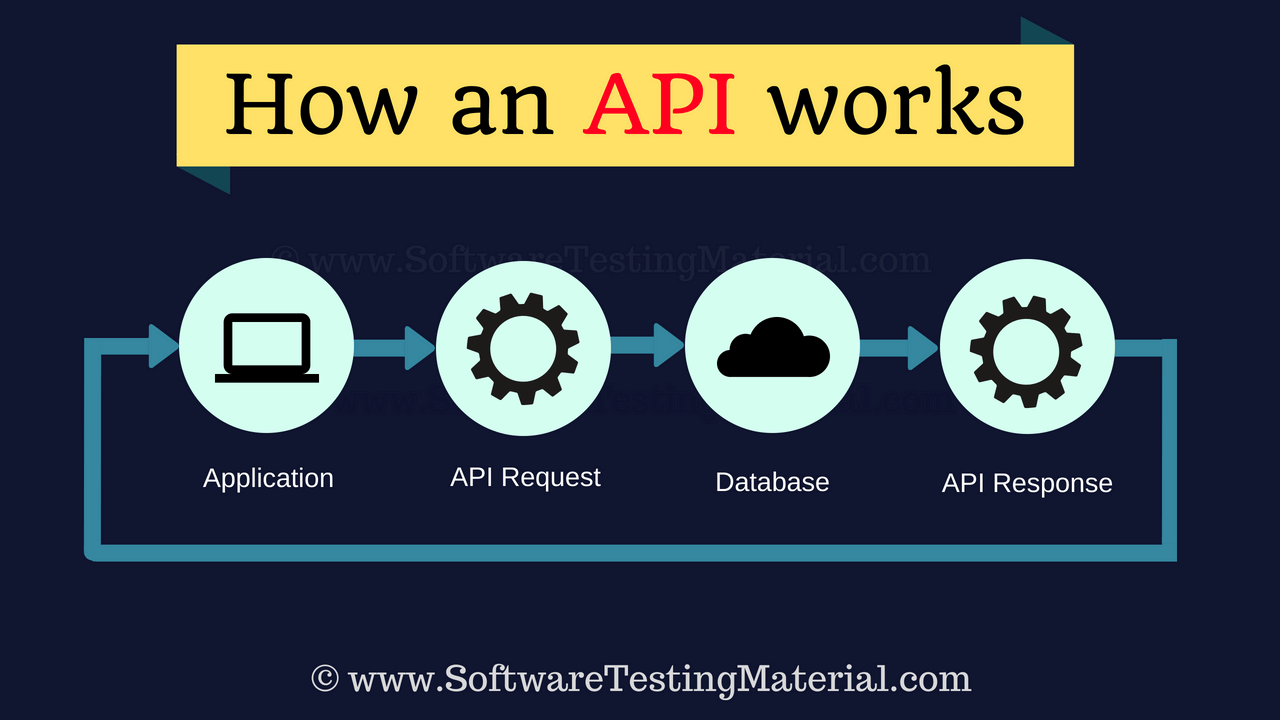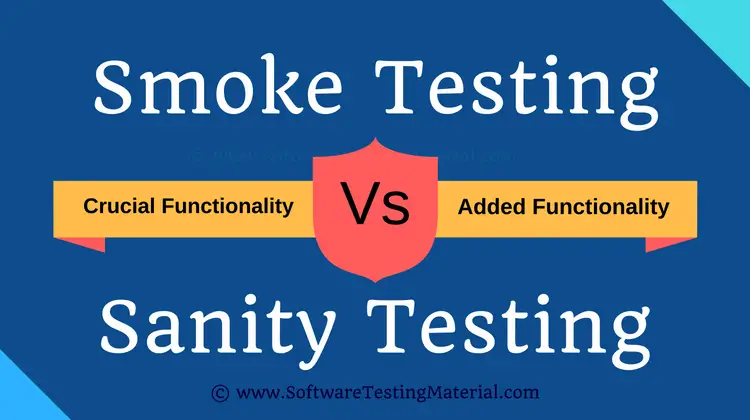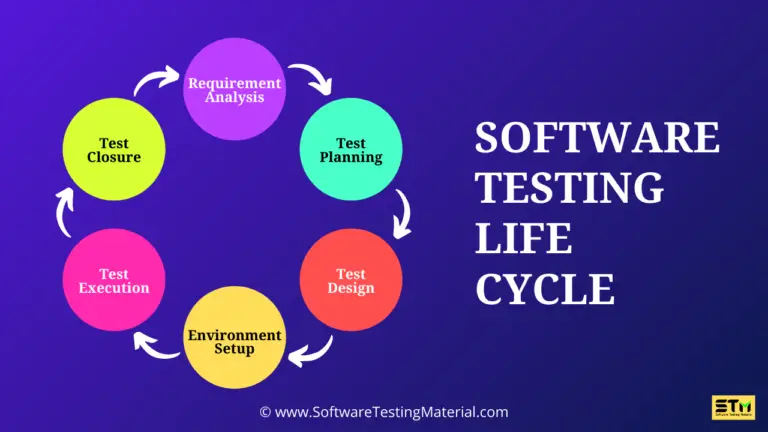A Comprehensive API Testing Guide
Welcome to our API Testing Tutorial! In today’s digital age, APIs, or Application Programming Interfaces, play a vital role in allowing different software systems to communicate with each other. Whether it’s a mobile app talking to a server or two web services exchanging data, APIs make these interactions possible.
In this tutorial, we will guide you through the basics of API testing, which is the process of verifying that an API is functioning as expected. We’ll cover the importance of API testing, the different types of tests you can conduct, and the tools you can use to make your job easier. Our goal is to simplify the concepts and make them accessible, even if you are new to this topic. So, let’s dive in and start your API testing journey!
What is an API?
API is an acronym and it stands for Application Programming Interface. API is a set of routines, protocols, and tools for building Software Applications. APIs specify how one software program should interact with other software programs.
Routine: a program that performs a particular task. Routine is also known as procedure, function, or subroutine.
Protocols: A format for transmitting data between two systems.
In simple words, API acts as an interface between two software applications and allows the two software applications to communicate with each other.
Let’s see some examples of an API in a more approachable way.
Assume an API as a Waiter at a Restaurant.
At a restaurant, you give an order based on the items available on the menu, and the waiter tells the kitchen. The kitchen prepares your food, and the waiter brings it back to you.
In this scenario, the waiter’s role is similar to an API. As a waiter, the API takes a request from a source, takes that request to the database, fetches the requested data from the database, and returns a response to the source.
Now let’s see another example.
If you are using a flight service engine say Expedia, where you search for flights on a specific date. Once you pass the data such as Source, Destination, Onward Date, and Return Date and click on search. Expedia sends a request to airlines through an API as per your search details. The API then takes the airline’s response to your request and delivers it right back to Expedia.
API gets the request from the user and gives the response without exposing internal logic. API acts like an Abstraction in the OOPs concept.
What is API Testing?
API testing is a type of software testing that involves testing APIs directly and also as a part of integration testing to check whether the API meets expectations in terms of functionality, reliability, performance, and security of an application. In API Testing our main focus will be on a Business logic layer of the software architecture. API testing can be performed on any software system which contains multiple APIs. API testing won’t concentrate on the look and feel of the application. API testing is entirely different from GUI Testing.
Let’s see how is UI testing is not similar to API testing?
UI (User Interface) testing is to test the graphical interface part of the application. Its main focus is to test the look and feel of an application. On the other hand, API testing enables communication between two different software systems. Its main focus is on the business layer of the application.
Why is API Testing Important?
API testing is crucial for several reasons. First, it ensures that the core functionality of the application works as intended by validating the interactions between different software systems. This early detection of issues can save significant time and resources during the development process. Second, because APIs often handle large amounts of data and execute critical tasks, thorough testing helps maintain data integrity and security, protecting against potential breaches or data losses. Third, well-tested APIs contribute to a seamless user experience by ensuring that backend processes run smoothly and quickly, ultimately leading to more robust and reliable software applications. Finally, API testing supports continuous integration and delivery practices, enabling faster and more efficient release cycles by automating tests and identifying defects early on.
API Testing Types
API testing typically involves the following practices:
- Functional Testing: This type assesses whether the API performs and functions as expected. It ensures the API returns the correct responses for a given request, maintaining the integrity and capability of the API.
- Load Testing: Load testing examines how the API handles a large number of requests and data. It evaluates the API’s performance under heavy loads to ensure it remains reliable during peak usage times.
- Security Testing: This testing checks the API for vulnerabilities and ensures that it is secure. It helps in identifying potential threats and weaknesses that could be exploited by malicious users.
- Validation Testing: Validation testing ensures that the API meets the specified requirements and performs actions correctly. It validates that the API works as intended with the correct input and output.
- Error Handling Testing: This type of testing involves checking how the API manages errors and exceptions. It ensures the API provides meaningful error messages and handles exceptions appropriately without crashing.
- Performance Testing: Performance testing measures the speed, responsiveness, and stability of the API. It helps to identify any performance bottlenecks and ensures that the API works efficiently under various conditions.
- Reliability Testing: This ensures that the API consistently performs well over time. It checks if the API remains stable and reliable even after long periods of use.
- Unit Testing: This tests individual parts of the API in isolation. It ensures that each component works as expected on its own.
- Integration Testing: Integration testing examines how the API interacts with other APIs, systems, or services. It ensures that the combined parts of the application work together as expected.
- Regression Testing: Regression testing is conducted to ensure that recent code changes have not adversely affected existing functionalities of the API. It helps maintain the overall stability after updates or improvements.
- Fuzz Testing: This involves sending random or unexpected data to the API to see how it handles it. It helps find vulnerabilities and improves the robustness of the API.
- Fault Tolerance Testing: This tests how well the API handles unexpected problems or errors. It checks if the API can continue working even when issues occur.
- Interoperability and WS Compliance testing: Interoperability and WS Compliance Testing is a type of testing that applies to SOAP APIs. Interoperability between SOAP APIs is checked by ensuring conformance to the Web Services Interoperability profiles. WS-* compliance is tested to ensure standards such as WS-Addressing, WS-Discovery, WS-Federation, WS-Policy, WS-Security, and WS-Trust are properly implemented and utilized
- API Documentation Testing: This checks that the documentation for using the API is accurate and easy to understand. Good documentation helps developers use the API correctly.
Refer: 100+ Types of Testing
Common tests on APIs
Some of the common tests we perform on APIs are as follows.
- To verify whether the return value is based on the input condition. The response of the APIs should be verified based on the request.
- To verify whether the system is authenticating the outcome when the API is updating any data structure
- To verify whether the API triggers some other event or request another API
- To verify the behavior of the API when there is no return value
Advantages of API Testing
- API Testing is time effective when compared to GUI Testing. API test automation requires less code so it can provide faster and better test coverage.
- API Testing helps us to reduce the testing cost. With API Testing we can find minor bugs before the GUI Testing. These minor bugs will become bigger during GUI Testing. So finding those bugs in the API Testing will be cost-effective to the Company.
- API Testing is language independent.
- API Testing is quite helpful in testing Core Functionality. We can test the APIs without a user interface. In GUI Testing, we need to wait until the application is available to test the core functionalities.
- API Testing helps us to reduce the risks.
What exactly needs to be verified in API Testing?
Basically, on API Testing, we send a request to the API with the known data and we analyze the response.
- Data accuracy
- HTTP status codes
- Missing or duplicate functionality
- Response time
- Reliability issues
- Error codes in case API return any errors
- Authorization checks
- Multithreaded issues
- Error codes if API returns
- Non-functional testing such as performance testing, security testing
What are API Methods?
API methods, often known as HTTP methods, are the actions that can be performed on the data provided by an API. The most commonly used API methods are GET, POST, PUT, and DELETE.
- GET: This method is used to retrieve data from a server. It does not change any data and is only used to fetch information.
- POST: This method is used to send data to a server to create a new resource. It usually results in adding new data to the server.
- PUT: This method is used to update an existing resource on the server. It sends data to the server to overwrite the existing information.
- DELETE: This method is used to remove an existing resource from the server. It tells the server to delete the specified data.
These methods help in performing various operations on the data, making it easier to manage and manipulate through APIs.
Tools used for API Testing:
Some of the tools used for API Testing are as follows:
- Postman
- Katalon Studio
- SoapUI
- Assertible
- Tricentis Tosca
- Apigee
- JMeter
- Rest-Assured
- Karate DSL
- API Fortress
- Parasoft
- HP QTP(UFT)
- vREST
- Airborne
- API Science
- APIary Inspector
- Citrus Framework
- Hippie-Swagger
- HttpMaster Express
- Mockbin
- Ping API
- Pyresttest
- Rest Console
- RoboHydra Server
- SOAP Sonar
- Unirest
- WebInject
Refer to this link to learn more about these API Testing Tools
Difference between API testing and Unit Testing?
UNIT TESTING:
- Unit testing is conducted by the Development Team
- Unit testing is a form of White box testing
- Unit testing is conducted prior to the process of including the code in the build
- Source code is involved in Unit testing
- In unit testing, the scope of testing is limited, so only basic functionalities are considered for testing
API TESTING:
- API testing is conducted by QA Team
- API testing is a form of Black box testing
- API testing is conducted after the build is ready for testing
- Source code is not involved in API testing
- In API testing, the scope of testing is wide, so all the issues that are functional are considered for testing
Challenges in API testing
Some of the challenges we face while doing API testing are as follows
- Selecting proper parameters and its combinations
- Categorizing the parameters properly
- Proper call sequencing is required as this may lead to inadequate coverage in testing
- Verifying and validating the output
- Due to the absence of GUI, it is quite difficult to provide input values
Types of bugs we face when performing API testing:
Issues observed when performing API testing are
- Stress, performance, and security issues
- Duplicate or missing functionality
- Reliability issues
- Improper messaging
- Incompatible error handling mechanism
- Multi-threaded issues
- Improper errors
API Testing Best Practices
- Test for the expected results
- Add stress to the system by sending a series of API load tests
- Group API test cases by test category
- Create test cases with all possible inputs combinations for complete test coverage
- Prioritize API function calls to make it easy to test
- Create tests to handle unforeseen problems
- Automate API testing wherever it is possible
Frequently Asked Questions
What is API Test Automation and How Does it Work?
API Test Automation is a method used to test Application Programming Interfaces (APIs) to ensure they work correctly and reliably. It involves writing scripts and using tools to automatically send requests to APIs and check their responses. This helps identify any issues or bugs quickly and efficiently, saving time and effort compared to manual testing. Automated tests can run frequently to ensure the API remains functioning as expected throughout the development process.
What is the Relationship Between API Testing And API Monitoring?
API testing and API monitoring are closely related but serve different purposes in API lifecycle. API testing is conducted to validate the functionality, performance, and security of APIs before they are deployed. It ensures that the API meets the expected standards and works correctly. On the other hand, API monitoring involves continuously checking the API’s performance and availability in a production environment to ensure it operates efficiently and reliably over time. While testing is pre-deployment, monitoring is a post-deployment activity.
Here I have hand-picked a few posts which will help you to learn more.
- API Testing Interview Questions
- SOAP Interview Questions
- Postman Tutorial (API Testing using Postman)
What are your opinions about this post? Was this post helpful? Do comment.











Its nice
You have simplified the API testing concept!
Thanks, Pooja.
Hi Raj Kumar,
you have cleared my all doubts of API testing.
and I have found a UI issue in your in this module “api-testing-interview-questions/”
question number 11 have some points and there are misprint issue two times written 3 number.
I don’t have your EmailId thats why i am posting this on comment side.
Thank you
Pragya Singh
Hi Pragya Singh,
Nice catch. It has been modified.